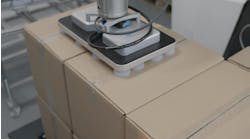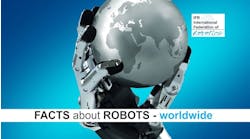The Internet of Things (IoT) was supposed to usher in a truly connected world and change the way we do business. But has it?
Yes, smart assistants are growing in popularity and connected devices are becoming more common. But if you’re thinking the IoT hasn’t achieved the transformative effect on how we live and work that we were promised, you’re not alone: One recent survey revealed that 61% of business leaders believe we have barely begun to scratch the surface of what IoT technologies can do.
The potential is there: It’s projected that by 2024, there will be 4.1 billion cellular IoT connections. That’s a lot of power that can be harnessed, and this trend isn’t specific to any one region or industry – it touches every business around the globe. Fragmentation is holding back the IoT’s development, yet reliable, fast, secure and low latency 5G networks can play a pivotal role in creating an ecosystem where everyone can thrive.
This especially applies to the Industrial IoT (IIoT). It’s in this arena where we’ll see the truly exponential potential of the IoT come to life, turbo-charged by 5G, ushering in a 4th Industrial Revolution. Some estimates project $619 billion in new value across 10 different industries by unlocking the IIoT. But before we get there, we need to address a few critical challenges.
The IIoT sometimes has an issue with what can be termed “pilot-itis,” where companies start an IoT initiative but things never quite get off the ground. This can lead to frustration with the entire concept, as the same report mentioned above found that 76 percent of all IoT initiatives are considered to be failures by the companies that initiated them, with around 60 percent stalling at proof of concept.
I see three main things holding back the IIoT from reaching its full potential:
We are at an inflection point as 5G rolls out across the globe. 5G is faster and more secure than any previous generation of mobile wireless connectivity and is more reliable than Wi-Fi. As 5G networks start to proliferate, connectivity for IIoT solutions should no longer be an issue, and they may help “pilot-itis” become a thing of the past.
Achieving a ROI for any business is critical to realizing the adoption of IIoT solutions, and the current fragmented system just isn’t delivering. This holds back the exponential growth and development needed to make the 4th Industrial Revolution a reality. We need to bring the entire ecosystem together, as the business models at the edge are only going to be unlocked when true collaboration is taking place.
That means companies need to evaluate the flow of data and information for their IoT systems prior to deployment so that they can consider all variables. In their evaluation of their system, they will need to:
- Determine operational factors and physical limitations: Mapping where current technological challenges and limitations exist will mitigate issues down the line. Many companies look to success stories from other IIoT solutions while failing to recognize they do not have the technical requirements to sustain a similar solution.
- Build plans that are adaptable: Often, IIoT solutions are too rigid, and if they do not work right away, quickly abandoned. IIoT solutions involve pulling information from across different functions of a business and therefore need to be able to function to adapt if one aspect of the workstream does not succeed. Additionally, they need to be built to adapt to the development and evolution of technology.
The advent of 5G – with its lightning-fast speed, low latency, and superb reliability – can be what solves the challenges and truly jumpstarts the true potential of the IIoT. If we can overcome the lack of connectivity, fragmentation and poor user experience holding the technology back, it can bring us closer to the revolutionary, connected future we were promised.










